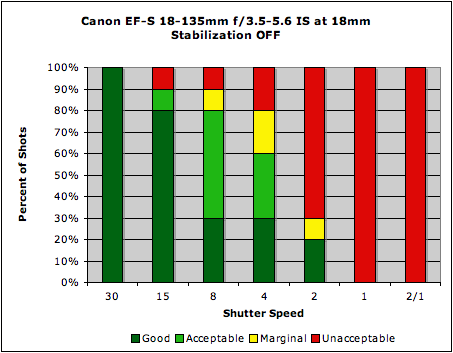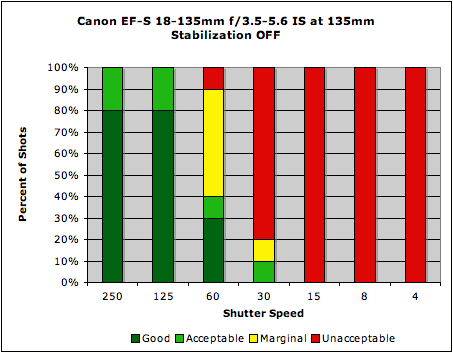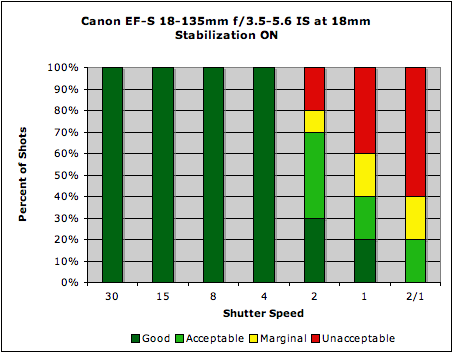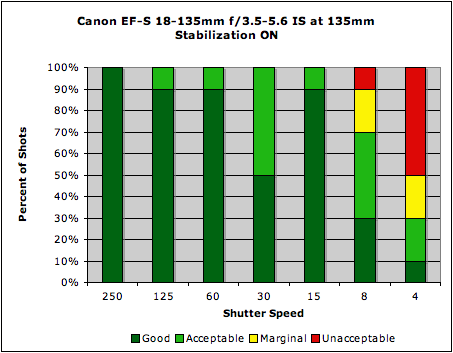Most people tend to think of image stabilization as being mainly for telephoto lenses. While it's true that their longer focal lengths tend to magnify the effects of camera shake, image stabilization can provde a very useful assist at wider angle focal lengths as well; anyone who's ever tried to blur the image of a waterfall, while keeping the surrounding landsape tack-sharp knows exactly what I'm talking about.
At the widest end of its range, the Canon 18-135mm produced about two stops of image stabilization, including a reasonable number of sharp shots with IS on at 18mm from 1/8 to 1/2 second; this is fairly impressive performance, but a bit shy of the promised 4 stops of improvement.
 |
| Mouse over this chart to show results with IS activated. |
At 135mm, the lens again produces about 3.5 stops of image stabilization, which is where Canon has probably found its marketing information. The stabilization is most noteworthy at the 1/60, 1/30 and 1/15 second points, where there is some quite remarkable performance.
 |
| Mouse over this chart to show results with IS activated. |
IS systems tend to provide more benefit to less-stable shooters than very steady ones, so most users will see the same or greater amounts of shake reduction as we measured here. You can read more about our IS test methodology here: SLRgear IS Test Methodology, v2.

